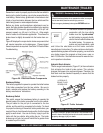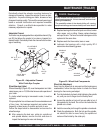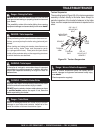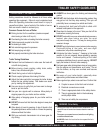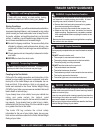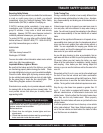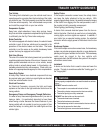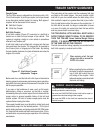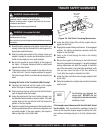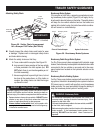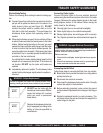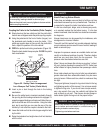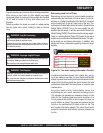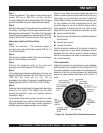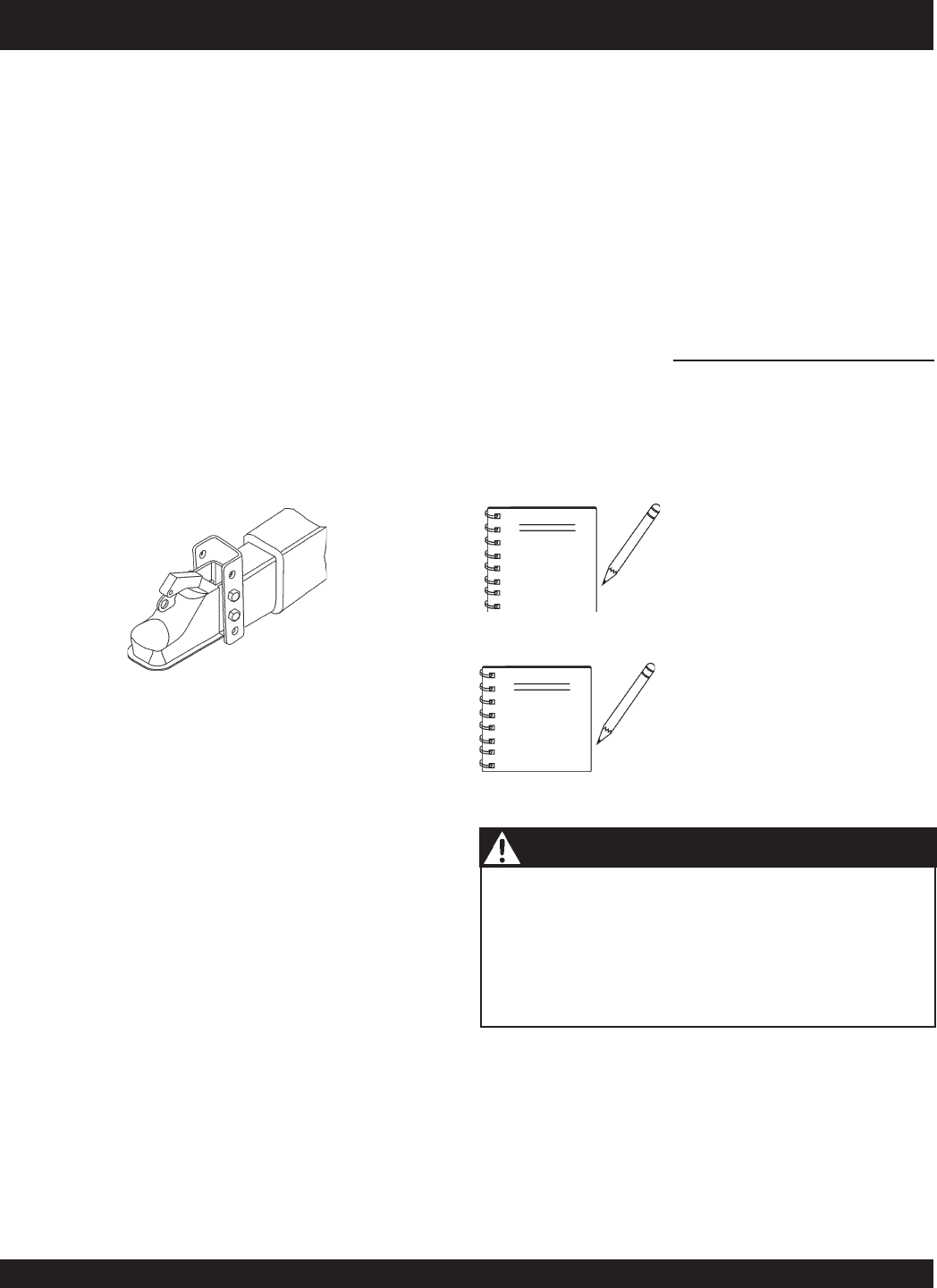
PAGE 40 —DRY PRIME PUMP — OPERATION MANUAL — REV. #3 (10/06/08)
Coupler Types
The Dry Prime pump is shipped from the factory with a 2-5/
16-inch ball coupler. A pintle eye coupler can be purchased
as an alternative method (option) for towing. Both types of
couplers will be discussed in this manual.
Ball Hitch Coupler
Pintle Eye Coupler
Ball Hitch Coupler
A ball hitch coupler (Figure 27) connects to a ball that is
located on or under the rear bumper of tow vehicle. This
system of coupling a trailer to a tow vehicle is sometimes
referred to as “bumper pull.”
A ball hitch trailer may be fitted with a tongue jack that can
raise and lower the coupler. The tongue jack is mounted to
the A-frame (front, or tongue) part of the trailer. By rotating
the jack handle clockwise, the jack will extend and raise the
tongue of the trailer.
Figure 27. Ball Hitch Coupler
Adjustable Tongue
Before each tow, coat the ball with a thin layer of automotive
bearing grease to reduce wear and ensure proper operation;
and check the locking device that secures the coupler to the
ball for proper operation.
If you see or feel evidence of wear, such as flat spots,
deformations, pitting or corrosion, on the ball or coupler,
immediately have your dealer inspect them to determine the
proper action to prevent possible failure of the ball and
coupler system. All bent or broken coupler parts must be
replaced before towing the trailer.
The coupler handle lever must be able to rotate freely and
automatically snap into the latched position. Oil the pivot
points, sliding surfaces, and spring ends with SAE 30W motor
oil. Keep the ball socket and latch mechanism clean. Dirt or
contamination can prevent proper operation of the latching
mechanism.
The load rating of the coupler and the necessary ball size
are listed on the trailer tongue. You must provide a hitch
and ball for your tow vehicle where the load rating of the
hitch and ball is equal to or greater than that of your trailer.
Also, the ball size must be the same as the coupler size. If
the hitch ball is too small, too large, is underrated, is loose
or is worn, the trailer can come loose from the tow vehicle
and may cause death or serious injury.
THE TOW VEHICLE, HITCH AND BALL MUST HAVE A
RATED TOWING CAPACITY EQUAL TO OR GREATER
THAN THE TRAILER Gross Vehicle Weight Rating
(GVWR). IT IS ESSENTIAL THAT THE HITCH BALL BE
OF THE SAME SIZE AS THE COUPLER.
The ball size and load rating (capacity) are marked on the
ball; hitch capacity is marked on the hitch.
When replacing a ball, the load
rating must match or exceed the
GVWR of the trailer.
NOTE
Coupler-to-hitch mismatch can result in uncoupling,
leading to death or serious injury.
Be sure the LOAD RATING of the hitch ball is equal or
greater than the load rating of the coupler.
Be sure the SIZE of the hitch ball matches the size of
the ball coupler.
WARNING - Hitch Ball Load Rating
NOTE
Before coupling the tow vehicle to
the trailer, be sure the size and rat-
ing of hitch ball match the size
and rating of the coupler. Hitch
balls and couplers are marked with
their size and rating.
TRAILER SAFETY GUIDELINES



